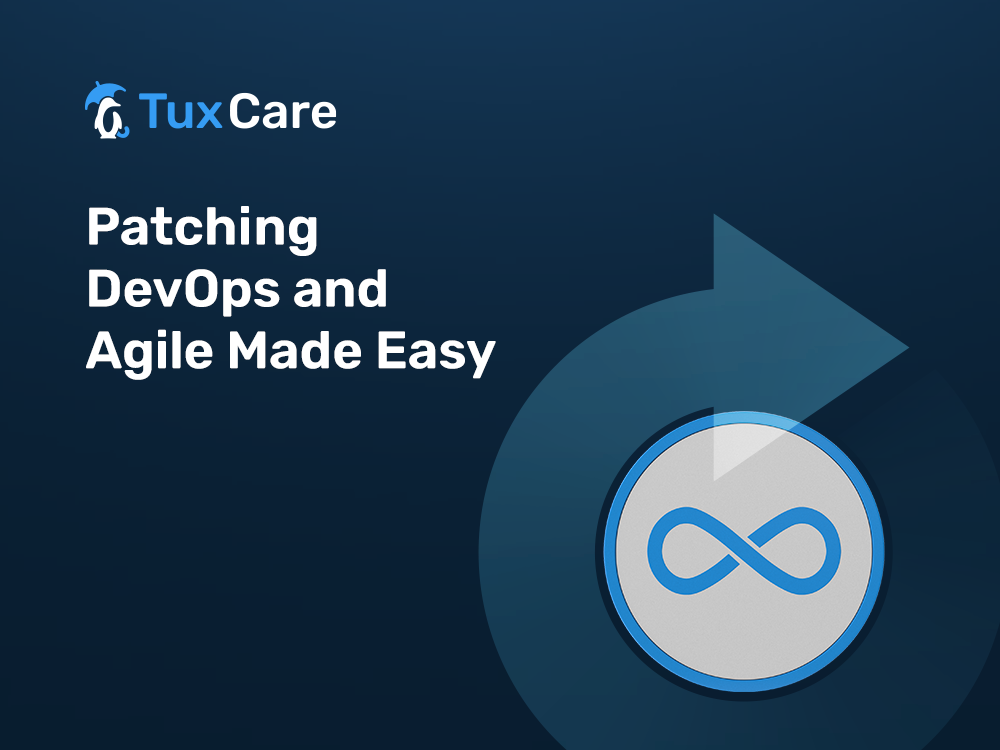Patching for DevOps and Agile Made Easy
Understanding the relationship between development operations (DevOps) and the agile software development (Scrum) framework is critical for organizations to create a secure, rapid application development lifecycle.
DevOps managers coordinate how the product development workstream will function. Integrating information technology (IT), especially patch management, is critical for helping these processes deliver continuous innovation and quality products securely.
Live patching, which is an accelerated vulnerability patching approach that doesn’t require a kernel reboot, is a tool that DevOps managers should keep in their arsenal – that can help improve the development lifecycle in a number of ways.
So, where does live patching fit into DevOps and agile development workflows?
What is DevOps Culture?
DevOps is a set of ideas and practices based on an agile method that helps developers and operations engineers collaborate better. It’s not just for developers and operations engineers; anyone who works on an application can benefit from these ideas and practices, which are based on agile principles.
DevOps is a tool for moving software through the development process, providing provisioned capabilities to deploy software into production and enabling feedback cycles between the development and production teams.
Bonding with the Scrum
Scrum is a simple governing model within a DevOps workstream. It’s an agile project management approach that helps teams structure and manage their work. Scrums help organizations establish clear guidelines for their software development method. They handle each project’s purpose and outcomes by outlining the complex product development workstream, including rules, artifacts, and processes.
A scrum team is a group of individuals working together to deliver the planned product increments. During the iterative approach, the product owner plans the sprints – which are short, predetermined periods of time when a scrum team works to finish a set amount of work.
The scrum development cycle is made up of three phases: planning, building, and releasing. The product owner will observe for a few days during a sprint, then monitor the progress to improve product development. This leader will recommend adjusting processes and rules as well. Like product owners, scrum masters also carry out scrum meetings daily in sync with all members to increase efficiency of collaboration amongst teams.
Some developers realized that they must revise the Scrum framework to address current software projects’ needs. As a result, this team may request DevOps services and resources from certain team members, better known as travelers. These subject matter experts move between Scrums to assist with critical sprints. Travelers are the first step in the collaboration between development and operations.
Flowing with the Upstream and Downstream
All software and product development occur in the upstream workflow within the DevOps pipeline. The downstream focus is on the delivery.
This is where live patching, which is a method of delivering a vulnerability patch into a running Linux kernel without a reboot, comes into the picture. Live patching of critical components within the DevOps pipeline occurs in both the deployment and test stages. DevOps engineers can integrate patching into the sprints to ensure the Linux or other code libraries stay updated during various pipeline stages.
TuxCare’s integration with Chef, Ansible, and Puppet provides support for downstream delivery patching and supports Python scripting and API access to the TuxCare ePortal for upstream.
DevOps engineers can validate if they execute the automated patching process correctly within the product before handing it off to the next stage in the pipeline without wasting valuable time.
Delivering Lean Thinking Results
Lean thinking refers to executing functions with little or no wasted time, or with duplication of effort. Critical thinking also comes into consideration to ensure collaboration between the upstream development environment for continuous integration and downstream delivery pipelines for continuous deployment – while maintaining a lean approach in executing tasks or sprints.
Leveraging TuxCare live patching automation across both downstream and upstream is an example of lean thinking. Organizations can reuse this capability by leveraging a proven automation strategy instead of duplicating patching strategies within the pipeline development cycles.
TuxCare DevOps Pipeline Alliances
TuxCare helps secure upstream and downstream workstream pipelines throughout DevOps deployment, securing immediate patching of new threats across the development and building infrastructure as well as the deployed production systems.
TuxCare’s KernelCare Enterprise automates kernel patching, ensuring that servers comply with security standards by deploying the latest patches soon after they become available. In partnership with Chef, Puppet, and Ansible, these tools automate infrastructure configuration, ensuring every system becomes configured correctly. Enabling Kernelcare Enterprise and Chef’s solution downstream, organizations can automate compliance on thousands of servers in minutes.
Why TuxCare?
Delivering effective and easy-to-implement solutions within the organization’s DevOps strategy, scrums, and culture is critical for any service provider or cybersecurity company. When it comes to automation and thinking lean while supporting upstream and downstream workflows, TuxCare delivers.
With over 12 years of experience in live patching Linux distributions, critical shared libraries, and open-source databases, TuxCare is a global leader in providing security updates without requiring systems to be rebooted.
TuxCare features flawless interoperability with vulnerability scanners, security sensors, and DevOps automation and reporting tools, as well asAPI access to our ePortal management platform. This dedicated private patch server runs inside your firewall on-premises or in the cloud.
To learn more about how TuxCare’s automated, rebootless vulnerability patching technology works or to schedule a demo, schedule a one-on-one conversation with one of our Linux security experts.



 Documentation
Documentation Login
Login



